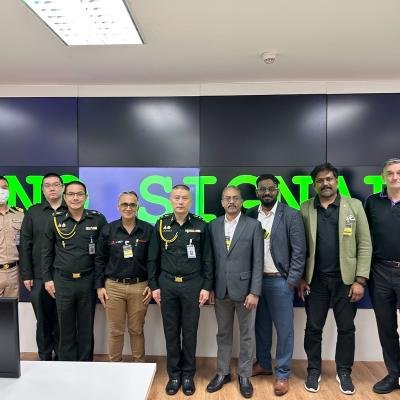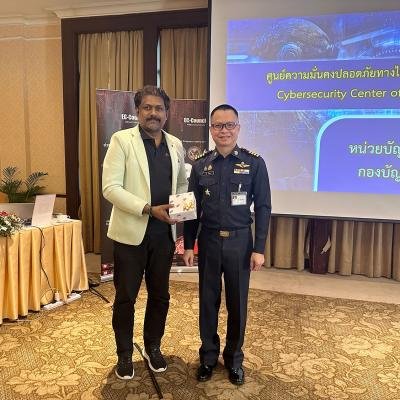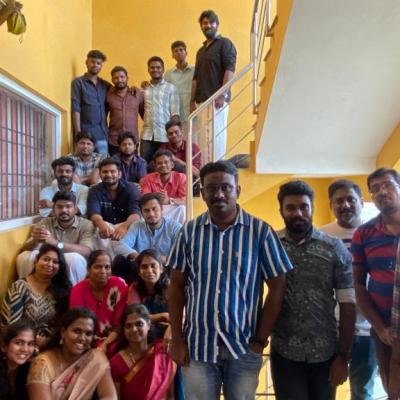In a rare but significant victory for the cybersecurity community, a free decryptor has been released for the notorious FunkSec ransomware. This tool now enables affected organizations to recover their encrypted data withoutpaying ransom, marking the end of a campaign that has so far claimed 172 known victims across the United States, India, and Brazil.
But what does this mean for the larger cybersecurity landscape? Are we simply lucky this time, or is there a larger lesson here?
In this detailed post, DigiAlert breaks down the FunkSec ransomware operation, its implications, and what organizations must do to stay resilient in a world of AI-powered threats.
The Rise (and Fall) of FunkSec: A Quick Overview
First surfacing in early 2025, FunkSec distinguished itself from other ransomware strains through its use of artificial intelligence, which allowed it to dynamically adapt to different network environments and security defenses.
By mid-year, FunkSec had breached over 170 organizations, including:
- Government institutions in India and Brazil
- Mid-sized U.S.-based tech firms
- Multiple universities and research centers
Unlike more polished ransomware gangs such as LockBit or BlackCat, FunkSec’s operators appeared inexperienced, focusing more on public notoriety and splashy defacements than stealthy operations. But even without refined tactics, their impact was undeniable—interrupting services, encrypting sensitive databases, and forcing several organizations offline for days.
Built in Rust: The Malware Developer’s New Favorite
FunkSec was built using the Rust programming language—joining a growing list of malware families such as BlackCat (ALPHV) and Agenda that are now leveraging Rust’s unique benefits:
- Memory safety reduces crash risk
- Cross-platform compatibility eases deployment on Linux and Windows
- High performance and obfuscation make detection more difficult
According to DigiAlert’s internal telemetry, malware samples written in Rust increased by 49% between Q4 2024 and Q2 2025. FunkSec represents a growing trend where attackers are moving away from C++ or Python toward more evasive and efficient languages—a shift that defenders must be prepared for.
The AI Edge: How FunkSec Leveraged Machine Learning
What set FunkSec apart wasn't just its language—it was the integration of machine learning models to identify high-value targets within a network.
Researchers suspect the malware used basic reinforcement learning techniques to:
- Detect unpatched software
- Prioritize domain controllers and backup servers
- Avoid honeypots and security sandboxes
This marks a significant development in ransomware evolution. Threat actors are now not just coding better—they’re thinking smarter, using AI to enhance decision-making, streamline lateral movement, and increase damage.
The Decryptor: A Lifeline for Victims
This month, researchers quietly released a free decryptor, likely based on a cryptographic flaw in FunkSec’s implementation of Chacha20-Poly1305 encryption. While exact technical details remain undisclosed to prevent future abuse, the implications are clear:
Even sophisticated attacks can have exploitable weaknesses.
Chacha20-Poly1305 is widely considered secure, but like any encryption scheme, its effectiveness depends on how it's implemented. Poor key generation, nonce reuse, or insecure entropy sources may have allowed reverse engineers to reconstruct the decryption logic.
The decryptor—now available through platforms like No More Ransom—has already helped dozens of organizations restore operations without paying ransom.
The Impact in Numbers
Let’s look at some hard data that paints the picture of FunkSec's campaign and the broader ransomware threat:
- 172 known FunkSec victims globally
- 3 out of 5 victims lacked AI threat detection systems
- Average ransom demand: $480,000
- Organizations that restored from backups within 48 hours: 31%
- Percentage of affected orgs in education and government: 42%
- Growth in AI-powered ransomware attacks (YoY): +63% (source: DigiAlert Threat Lab)
These numbers underline a worrying trend: Ransomware is becoming smarter, faster, and harder to stop.
A Word of Caution: Decryptor ≠ Immunity
While the decryptor is a welcomed development, it should not be viewed as a get-out-of-jail-free card. FunkSec might have been decrypted, but the methods used—Rust language, AI-enhanced targeting, and new obfuscation layers—will inspire copycats and successors.
Ransomware-as-a-Service (RaaS) gangs have shown incredible adaptability. One takedown often leads to two new threats. Just ask anyone tracking the LockBit or REvil timelines.
What DigiAlert Recommends: Ransomware Readiness Playbook
At DigiAlert, we help organizations prepare, detect, and recover from ransomware threats using a three-tiered strategy:
1. Proactive Threat Monitoring
Deploy behavior-based detection tools that go beyond static signature matching. FunkSec evaded many conventional EDRs due to its unique Rust codebase and AI logic.
- Implement anomaly detection using AI and ML
- Integrate continuous threat intel feeds
- Monitor for command-and-control traffic and lateral movement
2. Immutable Backups & Recovery Drills
Even with a decryptor available, organizations that had tested backup strategies recovered faster and more securely.
- Use offline, immutable backups
- Schedule quarterly incident response simulations
- Ensure BCDR (Business Continuity and Disaster Recovery) plans cover ransomware scenarios
3. Security Awareness and Phishing Defense
FunkSec often gained initial access through AI-generated phishing lures—emails that mimicked local service providers and government portals.
- Train staff regularly on phishing and social engineering
- Use sandboxed environments to test suspicious files
- Deploy email security tools that scan for spoofing and zero-day exploits
Emerging Trends to Watch
Looking beyond FunkSec, DigiAlert’s research team has flagged three emerging trends that could dominate the rest of 2025:
- Ransomware 2.0 – Extortion without encryption. Stealing data and demanding ransom for non-leakage. Expect this to rise by Q4 2025.
- AI vs. AI – As attackers use machine learning to evade, defenders must deploy AI to counter AI. Zero-trust plus AI-driven analytics will be key.
- Deepfake Extortion – Cases have already emerged where attackers deepfaked voice or video to trick CFOs into releasing funds. Human verification processes are now essential.
Final Thoughts: Celebrate, But Stay Vigilant
The takedown of FunkSec is a victory worth celebrating. It highlights the incredible value of open collaboration among security researchers, incident responders, and public-private alliances like No More Ransom.
However, it also reinforces the uncomfortable truth: Cybercriminals are evolving—and fast.
The next FunkSec might be smarter, better funded, and harder to decrypt.
Organizations must move from reactive to proactive security models. Waiting for a decryptor isn’t a strategy. Prevention, visibility, and resilience are the real defense.
At DigiAlert, We’ve Got Your Back
At DigiAlert, we’re on the frontlines of the ransomware war. Our Threat Intelligence, MDR, and Red Teaming services help you:
- Spot threats before they become breaches
- Respond faster with integrated playbooks
- Educate teams and build security-first cultures
Whether you're an SMB or a government agency, we tailor defenses that evolve with the threat landscape.
Have you or your organization faced a ransomware scare?
Tell us how you managed it in the comments below—we’d love to hear and learn from your experience.
Explore more cybersecurity insights and guides at DigiAlert’s Threat Center
Follow DigiAlert and VinodSenthil for expert takes on the latest in cybersecurity, ransomware defense, and digital risk management.







